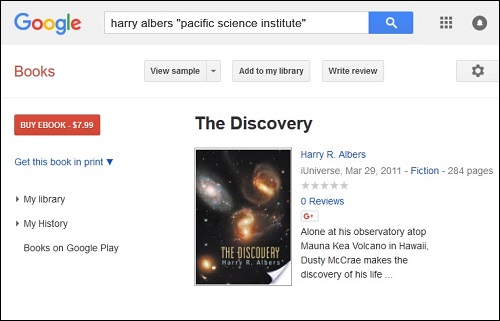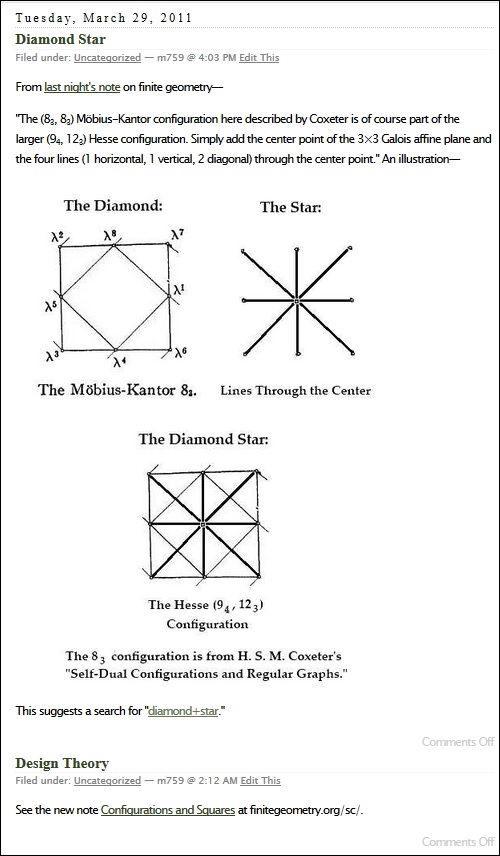See as well the previous post and Pacific Science Institute.
Monday, December 23, 2019
Saturday, August 4, 2018
Triple Cross
See also
This post was suggested by Log24 remarks on May 4, 2014,
the date of Garrett Lisi's Twitter post announcing the opening
of his Pacific Science Institute (see previous post).
The Public Life of Harry Albers
Suggested by the previous post, "The Secret Life of Harry Albers" —
The fictional "Pacific Science Institute" in novels by Albers
seems to have appeared first in his Murder at Lake Tomahawk
(Dec. 14, 2000). Its name may or may not have influenced the
founder of the later non -fictional Pacific Science Institute —
The Secret Life of Harry Albers
A novel by Harry Albers featuring his fictional Pacific Science Institute:
See the real Pacific Science Institute (PSI) in the previous post.
Synchronology check —
Related literary remarks —

— Cloud Atlas , by David Mitchell (2004).
PSI
Tuesday, April 23, 2019
Critical Invisibility
From Gotay and Isenberg, "The Symplectization of Science,"
Gazette des Mathématiciens 54, 59-79 (1992):
"… what is the origin of the unusual name 'symplectic'? ….
Its mathematical usage is due to Hermann Weyl who,
in an effort to avoid a certain semantic confusion, renamed
the then obscure 'line complex group' the 'symplectic group.'
… the adjective 'symplectic' means 'plaited together' or 'woven.'
This is wonderfully apt…."
On "The Emperor's New Clothes" —
|
Andersen’s weavers, as one commentator points out, are merely insisting that “the value of their labor be recognized apart from its material embodiment.” The invisible cloth they weave may never manifest itself in material terms, but the description of its beauty (“as light as spiderwebs” and “exquisite”) turns it into one of the many wondrous objects found in Andersen’s fairy tales. It is that cloth that captivates us, making us do the imaginative work of seeing something beautiful even when it has no material reality. Deeply resonant with meaning and of rare aesthetic beauty—even if they never become real—the cloth and other wondrous objets d’art have attained a certain degree of critical invisibility. — Maria Tatar, The Annotated Hans Christian Andersen (W. W. Norton & Company, 2007). Kindle Edition. |






